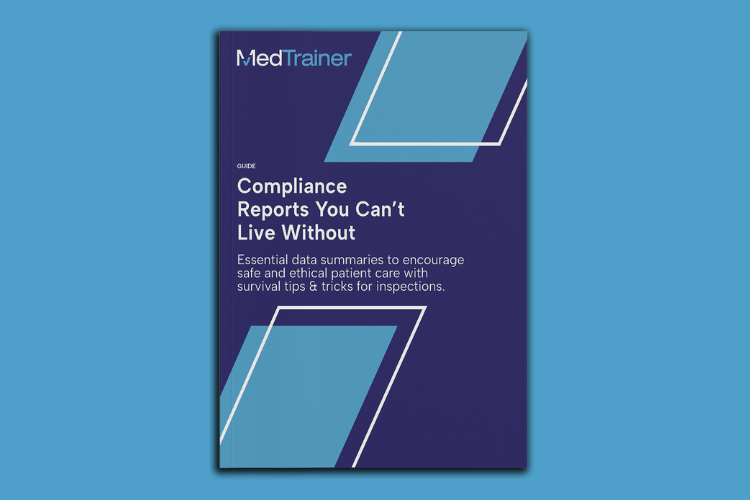Keeping everything in order and ensuring your healthcare organization complies with regulations can be challenging. That’s where compliance checklists come in. These helpful tools streamline your compliance systems and make it easier to ensure that your organization operates within the regulatory framework of your industry and specialty.
It’s important for every provider to take a closer look at the benefits of healthcare compliance checklists and how they help promote a compliance culture. By using simple checklists, you can identify areas that need improvement and ensure they get the attention needed to bring them up to regulatory standards — and keep them in compliance. Here’s how.
What Is a Compliance Checklist?
Compliance checklists are derived from standards set by compliance programs. Compliance programs provide a framework for identifying what constitutes an effective compliance checklist. According to the Centers for Medicare and Medicaid Services (CMS), a compliance program should foster a culture of safety at your organization with certain attributes:
- Prevent, detect, and correct non-compliance
- Be fully implemented and tailored to an organization’s unique operations and circumstances
- Have adequate resources
- Promote the organization’s Standards of Conduct
- Establish clear lines of communication for reporting non-compliance
From this list, a more comprehensive compliance checklist tailored to your unique organization can be built. Ensuring that all aspects of compliance oversight are covered will help you get the most out of a compliance checklist.
The Benefits of Compliance Checklists
Compliance checklists play an instrumental role in healthcare organizations by creating standards and holding everyone to those standards. A well-made checklist, followed uniformly by all parties, goes a long way in eliminating ambiguity from any process or situation. The results are clear:
- Improved patient safety and security
- Identification of areas for improvement
- Reduction in process failures
- Increased efficiency and consistency
This sampling of benefits also adds up to something even more important: accountability. Compliance checklists help organizations operate within an established regulatory framework, which ultimately brings transparency and accountability into the workplace where it might not otherwise exist (or fall short).
But simply having a checklist isn’t enough. It needs to be well-made and specifically applicable. Providers need a strong compliance program to inform the creation of compliance checklists.
Get everything you need to know about the 9 compliance reports you can't live without.
The Seven Core Compliance Program Requirements
The Centers for Medicare & Medicaid Services (CMS) criteria promote an effective compliance program in healthcare organizations. Here is a closer look at each requirement, which serves as a prerequisite to a well-thought-out compliance checklist:
1. Written Policies, Procedures, and Standards of Conduct
Healthcare organizations should have written policies, procedures, and standards of conduct that articulate the organization’s commitment to comply with all applicable federal and state standards.
2. Compliance Officer, Compliance Committee, and High-Level Oversight
Healthcare organizations must designate a compliance officer and a compliance committee accountable and responsible for the activities of the compliance program, including senior leadership that participates in standardizing compliance checklists.
3. Practical Training and Education
Healthcare organizations should provide adequate training and education that covers the elements of the compliance plan and how they translate into checklists. Understanding of fundamental concepts is the key to rigorous adherence to a checklist.
4. Effective Lines of Communication
Healthcare organizations should make effective lines of communication accessible to all when it comes to accessing checklists. Moreover, continuous improvement of checklists should be collaborative, with clear channels to voice suggestions.
5. Well-Publicized Disciplinary Standards
Healthcare organizations must enforce standards through disciplinary guidelines. Checklists should be created in a way that puts these guidelines into action and creates an accountable standard that’s repeatable by everyone following the compliance checklist.
6. Effective System for Monitoring, Auditing, and Identifying Compliance Risks
Healthcare organizations should conduct routine monitoring and auditing of their operations — including checklists. Compliance standards can change and so can situations and circumstances. Checklists need to be adapted to the changes.
7. Procedures and System for Prompt Response to Compliance Issues
Healthcare organizations must use effective measures to respond promptly to non-compliance and undertake appropriate corrective action. What happens if someone deviates from a compliance checklist? Remember, accountability is key.
Healthcare organizations must take these requirements seriously and implement them as part of their compliance program to safeguard patient health and ensure lasting regulatory compliance.
Auditing Your Compliance Checklist
Like all compliance standards, checklists evolve. Once you create a compliance checklist, create a mechanism for auditing it to ensure the organization operates within regulatory frameworks.
Your healthcare compliance officer or other manager should begin by reviewing the checklist to ensure it aligns with all applicable regulations and standards. Then, they should conduct a walkthrough with staff, to ensure clear understanding of the checklist and how to use it. This can involve one-on-one interviews, if necessary. This is also an excellent opportunity to identify gaps in training and make corrections.
The healthcare compliance officer or other healthcare managers should ensure that the checklist is updated regularly to reflect any changes in regulations or standards. Maintaining current documentation is one of the most effective ways to keep your staff compliant with regulatory requirements.
Compliance Checklist Template
A compliance checklist template can be an excellent way to create a comprehensive and practical checklist tailored to your organization’s needs. Here are some ways a template can be used to create a customized checklist:
- Tailoring to Specific Regulations: A compliance checklist template can provide a solid foundation for building customized details to meet specific regulatory requirements. For instance, a template for HIPAA compliance can include regulations specific to the organization or specialty.
- Customizing to Specific Processes: Every healthcare organization has unique processes and workflows to consider when creating a compliance checklist. A template can be modified to include specific processes and workflows unique to the organization or specialty.
- Identifying Areas for Improvement: A compliance checklist template can identify areas where the organization or specialty may need to improve compliance. For example, if the template reveals that the organization isn’t adequately addressing a specific regulation, the checklist can be modified to address this area of non-compliance.
- Simplifying the Process: Creating a compliance checklist from scratch can be time-consuming and complex. Starting with a template can streamline the process and increase efficiency. This allows the healthcare compliance officer to focus on customizing the checklist to meet the organization’s specific needs.
Even with a template, organizations may have tweaks here and there to make the checklist a more natural fit to a particular practice or process. It’s worth spending all the time it takes to create an exceptional document; a checklist that helps to protect staff and the safety of patients is the ultimate asset.
Checklists Are Simple, Yet Powerful
Compliance checklists are a worthwhile endeavor for healthcare organizations looking to promote a culture of compliance. By utilizing these checklists, organizations can improve patient safety and security, identify areas for improvement, reduce failures, customize their processes, and increase efficiency and consistency.
When it comes to getting started, MedTrainer is an all-in-one healthcare compliance software solution that can help healthcare organizations conceptualize the perfect checklist. With features such as Learning, Credentialing, Compliance, and much more, MedTrainer offers a comprehensive and effective solution for healthcare compliance management.
Visit our compliance page to learn more about how MedTrainer can help you make healthcare regulation compliance easy, starting with a simple checklist.

